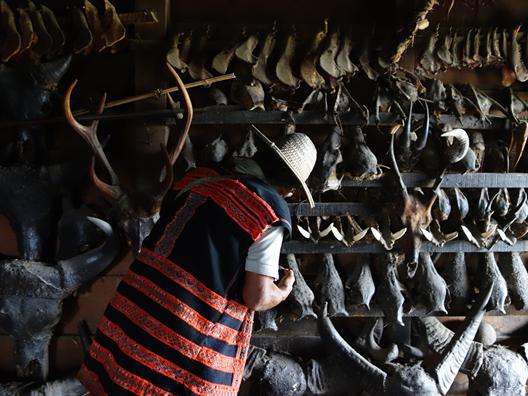Ambika Aiyadurai
Other projects
28 Nov 2005
Hunting by Tribal Communities in Arunachal Pradesh, Northeast India : Implications for Wildlife Conservation
The aim of this project is to study the traditional ecological knowledge of the Mishmi people of Arunachal Pradesh in Northeast India. There is an urgent need to document traditional knowledge for effective management of biodiversity before this knowledge is lost due to development and globalization.

Traditional Ecological Knowledge cannot be ignored in conservation programmes and we can learn and utilise this knowledge to devise strategies for management of natural resources in partnership with the local communities. Two broad sets of information about natural resources will be collected (ethnobotany and ethnozoology). I will use participant observation, open-ended individual and group interviews, informal focus group discussions, and oral histories documentation. Village functions and ceremonies will be attended to witness the rituals and document the role of both domesticated and wild plants and animals in Mishmi religious events. The role of trade is important to get an understanding of the influence of markets and roads to local economy. Also how these natural resources are valued by the local Mishmi and by the markets. More importantly the changes in the resource use and management will be studied to know how villagers cope with resource scarcity and how they adapt to the changes.
(1) Ethnobotany: Data will be collected from villagers about plants that are collected from the wild, who collects, from where and their direct and indirect consumption. Special emphasis will be made to the plant parts used in consumption, for medicine, ornamental purposes or for ritualistic reasons. For this, traditional healers/shamans, women, shop keepers will be interviewed. The local uses and market value of various plant products will be assessed through market visits (by discussing with collectors, traders and buyers). The seasonal use and efforts of collecting minor forest produce will be documented across seasons. The techniques of collections and restrictions will be recorded from different users.
(2) Ethnozoology: A resource map of the surrounding area of the villages will be prepared to record wildlife presence with the help of villagers using participatory methods. Farming areas, swidden plots, hunting and fishing zones will be mapped along with other forms of land use patterns. Use of wild animals, birds and insects will be documented across seasons by interviewing hunters and trappers. Changes in resource use brought by metalled road and markets will be examined.